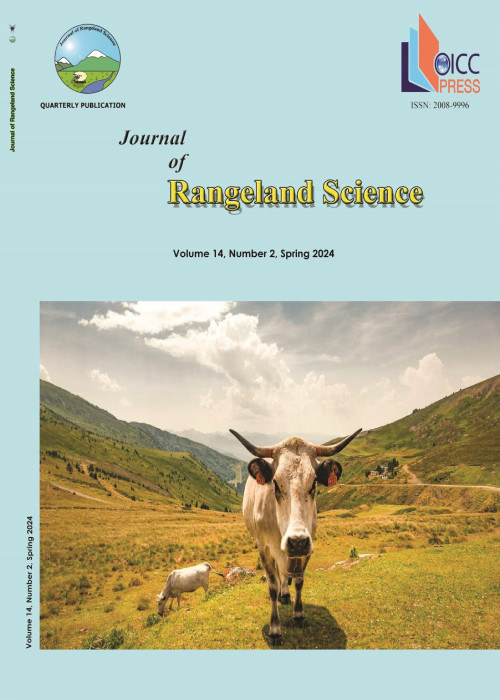Evaluation of Meteorological Factors in Estimating Forage Production in Steppe and Semi-steppe Rangelands of Iran
Rangeland production is especially important in meeting food requirement of rangeland societies. Sometimes, historical data are required for long-term grazing capacity estimation. Regression equations that are reasonably reliable for predicting forage production from precipitation characteristics have been developed for rangeland yield estimation. In this research, the relationship between forage production and meteorological factors was evaluated with six-year data for Pashaylogh and Incheboron rangelands (2003 to 2007 and 2017- Golestan province, Iran) and eleven-year data for Nemati rangeland (1998 to 2007 and 2017- Markazi province, Iran). For sampling, four parallel transects with a length of 300 m and at a distance of 100 m from each other were established in the steppe area (Nemati) and six 200-m transects were created in the semi-steppe area (Pashaylogh and Incheboron) and they were located parallel and at a distance of 100 m from each other. Due to the need for uniformity in the data of the rangelands of different provinces and their comparison, plot size of 1×2 m was selected in steppe site, and 1×1 m for semi-steppe sites. Data analysis was done through regression models. The results showed that forage production was related to temperature and precipitation rather than other meteorological factors (temperature, precipitation, sunlight hours, relative humidity, evapotranspiration and average wind speed). The best equation that can predict the relationship between meteorological data and forage production was August precipitation and temperature (R2=0.88) in Pashaylogh, the precipitation of June (R2=0.88) in Incheboron rangelands. There was a relationship between forage production (R2=0.79) with precipitation and temperature in July and in Nemati rangeland. The forage production index was determined based on effective meteorological factors and The Standardized Precipitation-Evapotranspiration (SPEI) drought index. According to meteorological data, a coefficient could be obtained to estimate long-term rangeland production and prevent from forage loss.
- حق عضویت دریافتی صرف حمایت از نشریات عضو و نگهداری، تکمیل و توسعه مگیران میشود.
- پرداخت حق اشتراک و دانلود مقالات اجازه بازنشر آن در سایر رسانههای چاپی و دیجیتال را به کاربر نمیدهد.



